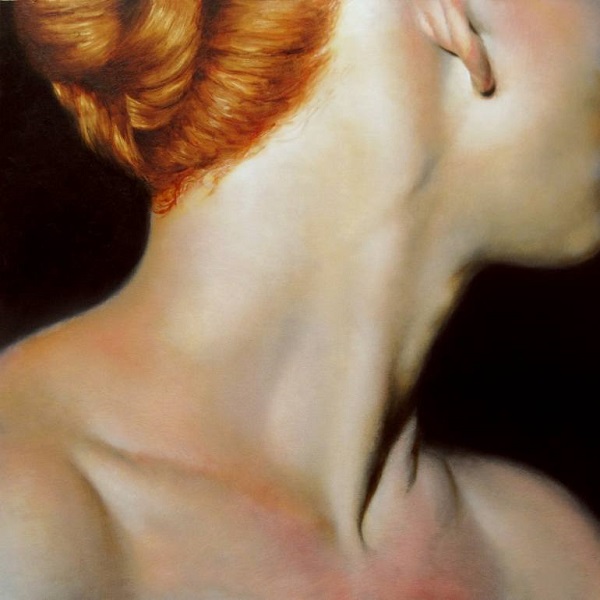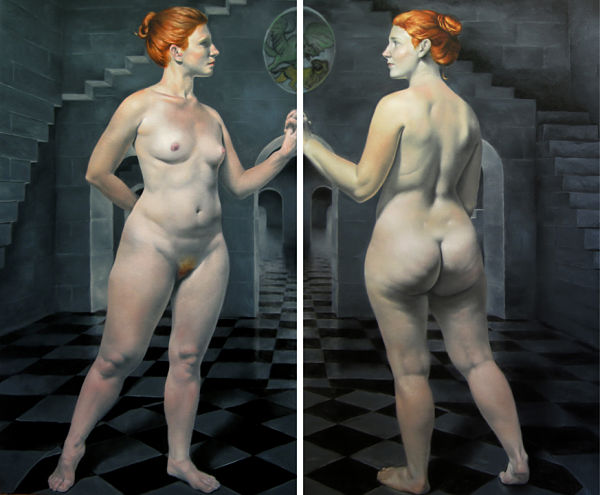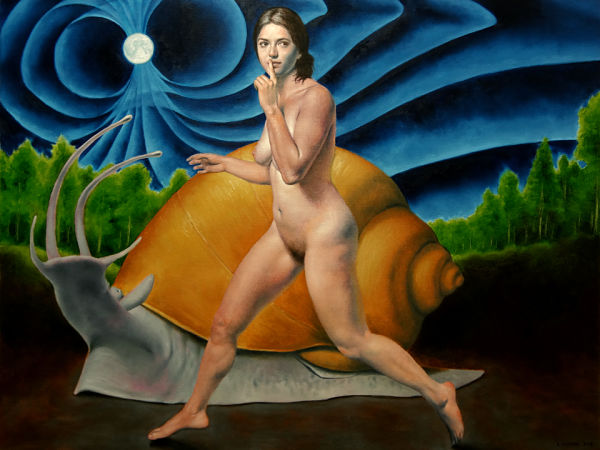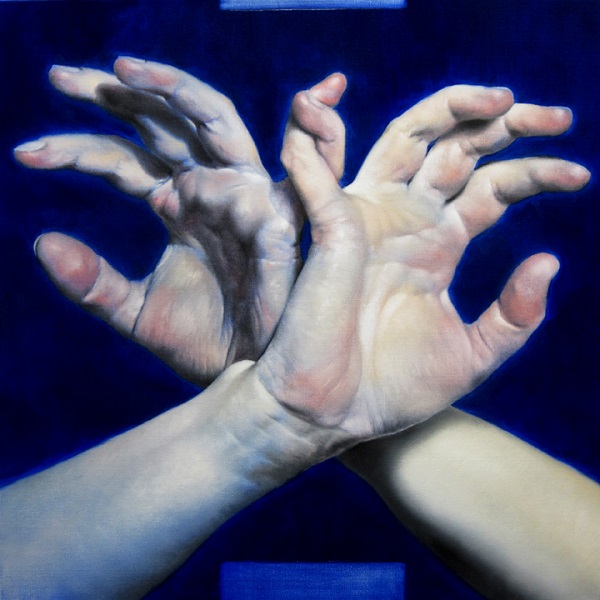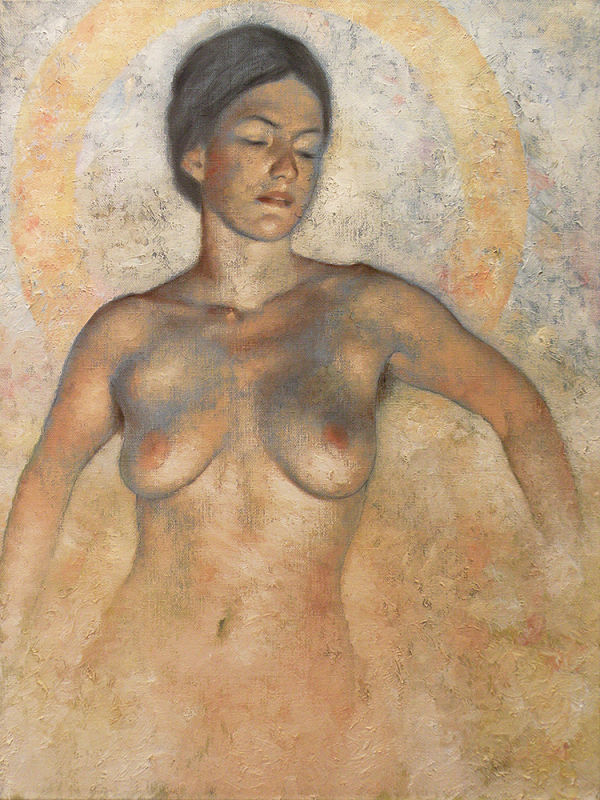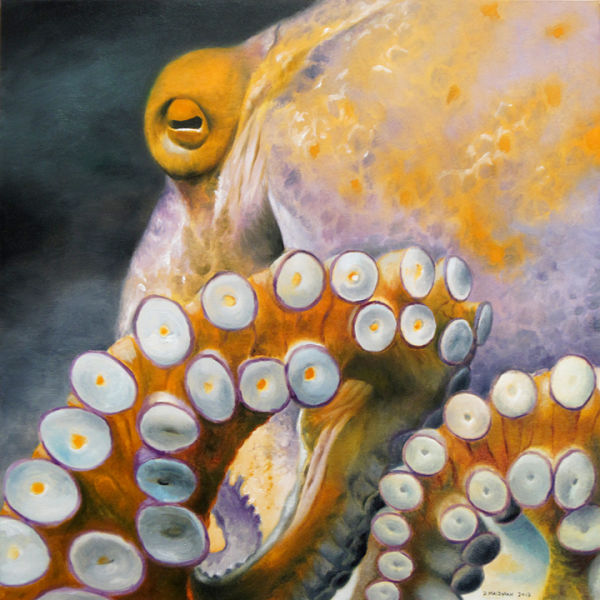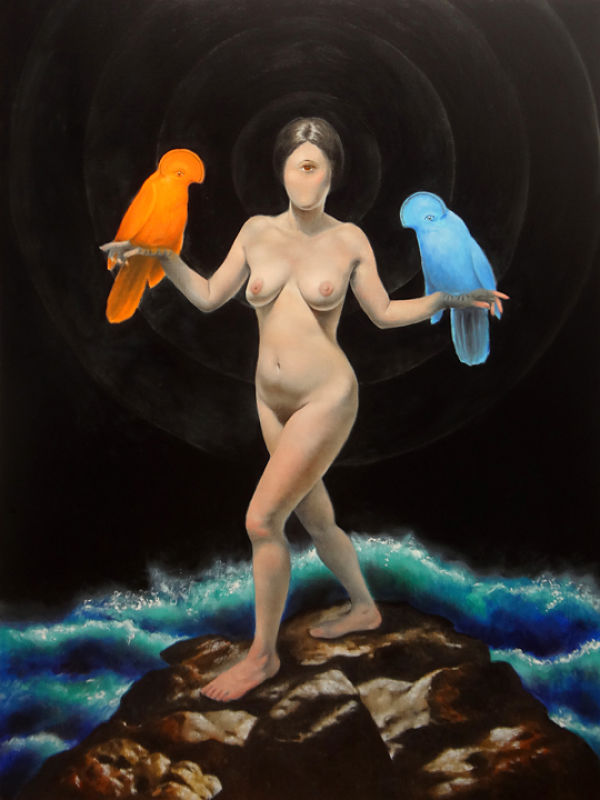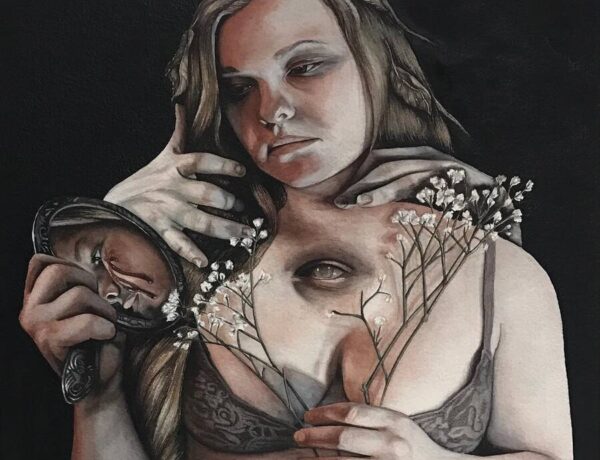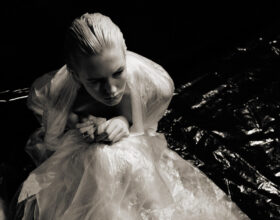 Daniel Maidman is a self-taught painter and art writer based in Brooklyn, New York. He is known for his high renderings of the human figure. His work can be found in the collections of New York Magazine senior art critic Jerry Saltz and the Library of Congress, to name a few. Maidman’s Da Vinci-esque figures and broad-ranging artistic writings have earned him a position of high esteem in the art world. We spoke with Daniel to take a closer look at his artistic process, and how he taught himself to paint like the masters.
Daniel Maidman is a self-taught painter and art writer based in Brooklyn, New York. He is known for his high renderings of the human figure. His work can be found in the collections of New York Magazine senior art critic Jerry Saltz and the Library of Congress, to name a few. Maidman’s Da Vinci-esque figures and broad-ranging artistic writings have earned him a position of high esteem in the art world. We spoke with Daniel to take a closer look at his artistic process, and how he taught himself to paint like the masters.
Book | Website | Instagram | Huffington Post archive | Jenn Singer Gallery
Your compositions tend to be on the simpler side, focusing on a main subject with minimal background or supporting figures/objects. Why isolate your subjects like this?
A couple reasons. The first is that, while I have a huge amount of patience for my subject, usually a human figure, I have a hard time making myself put the same degree of interest into my backgrounds, and the viewer can tell. Happily, this coincides with my outlook. I tend to conceptualize the subject in profound, almost metaphysical, isolation. Thinking about it now, I go back to the experimental videos I was shooting in my teens and twenties, and even then, I would put a ton of work into building luminous white screens to isolate figures from their environments.
Can you name a few of your favorite figurative painters, both contemporary and throughout history? What do you think these artists have in common that draws you to their work?
It’s such a long list! Instead of favorites, can I give you a few who happened to be pivotal in my development? These would be, in order of my exposure to them, Da Vinci, Sargent, Rubens, Velazquez, and contemporary painter Stephen Wright. I think it’s important in this context to list a few movie directors as well – Werner Herzog, Carl Theodor Dreyer, Andrei Tarkovsky, Federico Fellini, Ingmar Bergman, Michelangelo Antonioni, Krzysztof Kieślowski. Why is it important to mention the directors? Because these directors, like the painters I list, are almost obsessive in their focus on the figure, both as object and as living presence. Each of these artists is a master of the telling moment, that moment in which a psychology is laid bare or a spiritual transformation, even the most minute, takes place. And in some cases, their focus on this moment is so intense as to bleach out and negate the environment around the figure. Compositionally, I find that I have grown up to be most similar in sensibility to Dreyer as he was when he shot The Passion of Joan of Arc.
In your article, “The Male Muse,” for the Huffington Post you wrote, “Because depiction of the figure is inevitably tangled up with the sex drive of the artist doing the depiction, the subject is distorted by the sexual cognition of the artist.” Do you use this as a guiding principle when creating your own renderings of the figure, or do you try to resist the trappings of your own sexuality in pursuit of a more objective image?
This is very interesting. I know the linkage is inevitable, but because I have no intention of becoming sexually involved with my models, and don’t want any drama in the studio, I largely suppress this element in my day-to-day practice and interactions. I am absolutely certain it comes through anyway. The Stephen Wright whom I mention eventually became a friend, and has many interesting things to say. One of them is that who and what you are will bleed through into your work no matter what you do to suppress it, so that you needn’t go around worrying all the time about expressing yourself. You can’t help it. For an example, he cites the “beautiful monsters” of Ingres, and how profoundly weird these superficially domesticated figures are. What Wright fails to mention is that even though you’re true self may bleed through, you probably won’t recognize it. So I don’t know what my work says about my sexuality.
You are largely a self-taught artist. What do you feel have been the benefits and drawbacks of this approach to arts education?
Aha! OK, first let me tell you the drawbacks. It has taken me many years to figure out certain techniques and tricks, which are quite easy to obtain if you are willing to go to class and learn about it. There are many elements of color theory and basic paint handling which I still don’t understand. I hardly use any mediums because I don’t know how they work. I try to use simple colors so that the chemistry doesn’t blow up in my face a few centuries down the road. I see other people doing spectacular things and sometimes I wish I could do those. The benefit is this: every single thing I can do is mine. I have a total sense of possession about all of my techniques. I know how and why I put in the work to learn each one. So I feel like my work is more purely mine than I think I would if I had gone to school, especially if I’d had good teachers.
Can you tell us more about the process of teaching yourself to paint and draw? What was it that drew you to art, and how did you go about mastering the craft?
I always drew, from when I was very little. So I could give you an analytic reason for being drawn to art, but it’s really just more who I am. As for teaching myself, it was a long process of trial and error. I did go to a visual arts high school, which kept me making work during that period, but the head of my program was a doctrinaire abstract impressionist, and so what she had to teach me was of limited use. I started going to life drawing in Los Angeles in 1998, and this was the start of my real art education. I cycled through one set of media after another, learning what they wanted my hand to do at the same time I was learning about the figure. I eventually hit on the combination of materials I mostly use now – graphite and white pencil on tan paper – and I stuck with them because they provided the space for the subtle interpretation of form and light that I wanted above all else. I learned oil painting almost the same way, by bringing canvas pads to life drawing workshops. For a year or two, I used only lead white and burnt sienna, while I figured out the mechanical process of getting paint onto a brush and then onto a canvas. Every step of the way was hard going like that, and my early paintings are very embarrassing to look at, even though I thought they were great at the time. Much student work is bad, but because I was following my own curriculum, mine was bad in an obvious way that other student work is not bad.
In a blog post on artistdaily.com you recalled enrolling in an anatomy class in order to better render the human form. What was it like working with cadavers? What lessons, expected or otherwise, did you take away from that experience?
I loved this. I couldn’t tell what was going on with back muscles, and I knew how Michelangelo and Da Vinci studied the topic, so I took gross anatomy at Santa Monica College from 2001-2003. I think that all people are either OK handling corpses, or not. You will find out on the first day of class whether you are, and it turned out I was. I had a marvelous teacher and spent endless hours not only sitting in on and participating in dissection, but in drawing my observations. It revolutionized my understanding of the surface qualities of the human body. An unexpected lesson of this experience: my second class was on September 11, 2001. We worked with the radio on, and this remained true for a long time. So I felt that in a way, gross anatomy was my method of going down into the city of the dead, which all Americans needed to do in that time. Now what are we seeking in the city of the dead? The soul. I think that among his other motives, the dissectionist has always held out hope of finding the soul. I went through the body, finding traces of the life it had lived. And I went into the brain, which is a spectacular maze-like structure. I found in the body an intricate and brilliant machine. But of course I did not find the soul, because the soul is not a thing, and you will never see it by this method.
As well as being a skilled painter, you are also a talented art writer. You clearly have a very keen and analytical mind for art. How do you find these skills complement each other, if at all?
I used to think I knew, but now I don’t know. I used to think that I was teaching myself with my writing. In a sense, I still am. I set before me some art I don’t understand, and I force myself to keep writing, which is to say, thinking, until I have some understanding. This is a powerful method, which I would recommend for anyone, and one of the best things I learned in my otherwise inappropriate high school. But as time goes on, I also worry that I am becoming too facile, that synthesizing ideas is becoming too easy for me. So that instead of using words to open my eyes, I am blinding myself with them. A revolution in my method of writing is in order.
How do you balance writing, painting, and the other aspects of your life? You must have some excellent tips for time management.
If you only knew what I was neglecting! But there is this: if you want to do many things, you must get rid of your television. I watch maybe two hours of television in a week. Also it is good to cut back on social media and other forms of distraction. In any given day, you have potentially 2.5 blocks of useful time. What I mean by a “block” is a sufficient unit of time and energy to make progress in a given project. So you can keep yourself from wasting time by analyzing time in this way. If you have a job, that’s about 1.5 blocks out of your day. Then another 0.5 for your “real life” on a workday. This leaves you 0.5 blocks, early in the morning or late at night, to accomplish anything at all in your creative project. On the weekend, maybe you will get 1 or 1.5 blocks in a day. Once you see it this way, you can avoid the panic involved in going some days without being able to devote time to your project. You look at your week or your month and you steal as many blocks as you can, and when you hit that time in your schedule, that’s your creative time. So if you can get 5 blocks this month, great! It’s not nothing. But when those blocks come around, you must not check Facebook or read the news. This time is more precious than almost anything is, and you mustn’t squander it. If you can stick to this, it may feel like slow going, but over time, it really adds up, like saving money a bit at a time.
What upcoming exhibitions or projects can we expect from you in the future?
Thanks for asking! In only the past couple weeks; I have my first book of drawings out, Daniel Maidman: Nudes, from Griffith Moon Press. I’ve been working on this for a long time and I’m very excited about how it turned out. It’s a survey of 80 of the hundreds of life drawings I’ve done in the past few years, the ones that I’m most satisfied with as freestanding artwork or that had the most significance for me in the paintings they led to. I’m fortunate to have forwards by painter Vincent Desiderio and the late poet Max Ritvo, and an interview by painter Andrew Sendor. All three incredible artistic talents and thinkers about art.
I’m still working on the Meiosis paintings, which are a series of, for me, magical images, and I’m hoping to show those together at some point. My impetus has slowed down a bit because I realize I started the project in part to cast a spell so that I could have a kid – my wife and I are both a bit old for it and it took a long time. But we had the kid, so if the spell had anything to do with it, it worked, and the rest is tidying up. But I love these paintings and would like to see them completed.
I’m working on several bodies of figurative paintings. I’m working to complete a years-long project of nearly abstract architectural paintings, called The Black Walls, which I have been doing in collaboration with novelist China Miéville. Each painting has text in it, and he’s writing the texts for this project.
I’m considering doing more collage. And finally, I am on track to complete this year the final draft of the first volume of my novel, Railroad to Zanzibar, and have that out to agents and publishers. I’m very excited about it and can hardly think about anything else right now.



